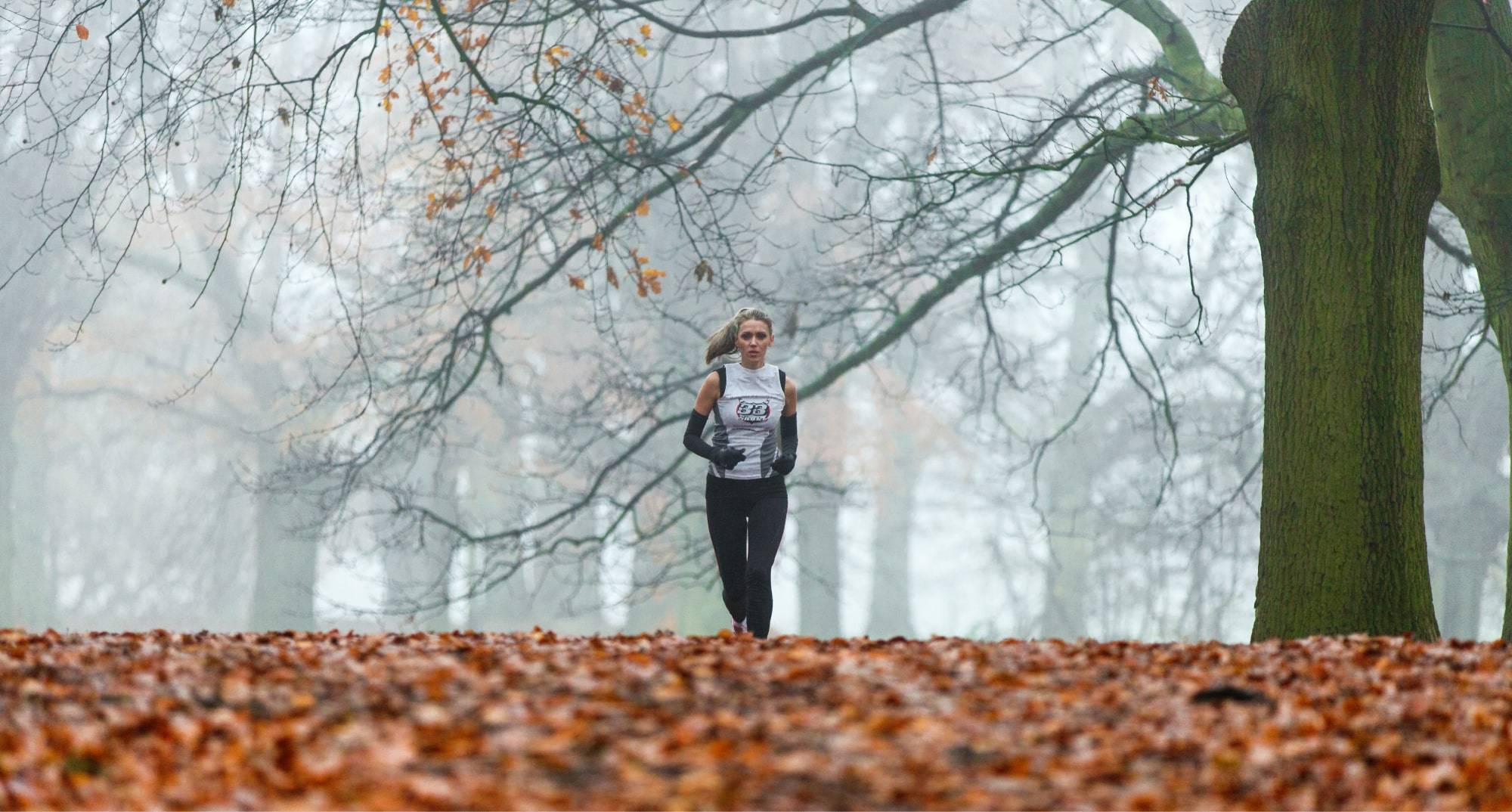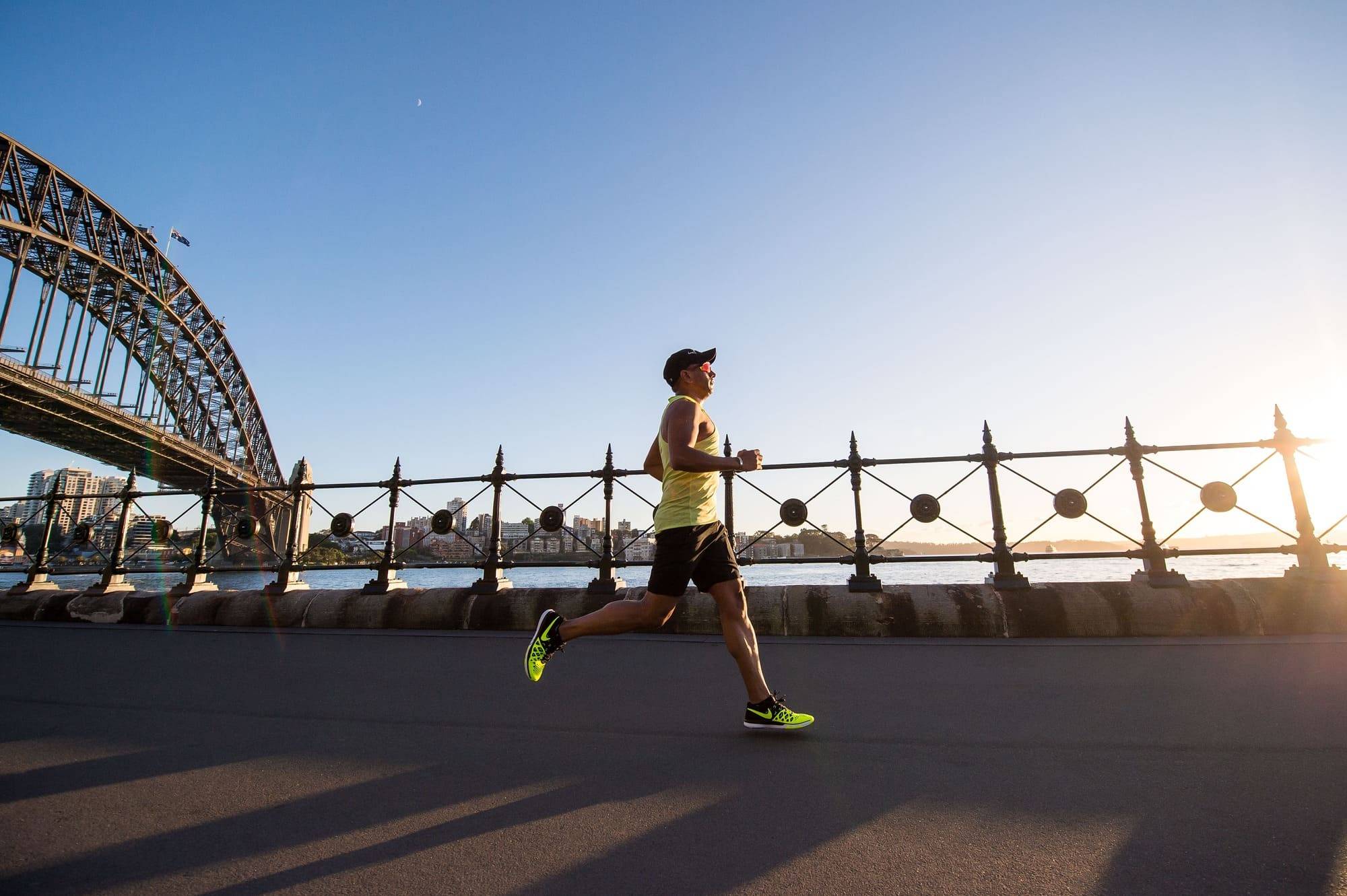The 5K is a difficult race that requires speed, endurance, and psychological resilience.
How to run a faster 5k? If you run 5 km for the result, you have to work in the “red zone” – this is a very high level of effort, which goes beyond our comfort zone.
When running in the “red zone,” it is difficult to maintain even an internal dialogue in your head, not to mention talking to someone. The heart rate reaches 95-100% maximum capability.
Thus training for a 5 km improves productivity because it:
- develops speed and endurance and increases the strength of muscles,
- accelerates metabolism by alternating the intensity of running,
- helps to improve running technique,
- builds resilience and discipline and increases the ability to endure.
To learn how to train for a 5k, continue reading and find the most popular workouts to get better results.
5k Specific Workouts to Improve Your Results
1. Hill Training
According to Runner’s World, hill training helps to improve running technique and develops the strength and power of leg muscles. Run hills with an angle of 4-6 degrees at an estimated pace of 5 km. Go down at a slow pace to catch your breath. Perform 6-8 repetitions of 1 minute.
2. Fartlek
Fartlek is a form of interval training with an arbitrary set of speed and recovery areas. Fartlek doesn’t have a clear plan. Its essence is improvisation: the runner alternates medium and high-intensity intervals with intervals in the recovery pace.
Fartlek training can be done anywhere: on a track, in the woods, or using hills. The combination of acceleration and rest can vary depending on your level of conditioning.
3. Pyramid (2-3-4-3-2) or (1-2-3-2-1)
“Pyramid” is somewhat reminiscent of the work of the gearbox in the car. Perform this workout continuously with equal rest according to the scheme following Fast Running: 2 minutes of intense running, 2 minutes of rest by jogging; 3 minutes fast, 3 minutes jogging; 4 minutes fast, 4 minutes jogging; repeat in reverse order. The shorter the interval, the faster the tempo should be.
Like fartlek, this session can be performed on any surface.
4. Interval Running
According to Runner’s World, you need to run 10-12 repetitions of 400 m at a target pace of 5 km. Rest between repetitions – jogging 200-300 meters.
Do not be surprised if this training is difficult for you. Many athletes reach the target pace on the first few repetitions but can hardly complete the last.
A common mistake runners make is to run the first few reps faster than the set pace.
The goal is to run at the right pace. So do not accelerate, even if it seems that the speed is too easy.
And be prepared for psychological and physical trials. This is the most important part of training, so if the end is difficult, that is how you build endurance and improve your body’s physical conditioning.
The duration and number of repetitions can vary. The basic rule is that the longer the speed section, the fewer repetitions you need to perform and the longer the rest between speed sections.
Alternative training options: 1000 m (5 repetitions), 800 meters (6-8 repetitions), etc. The rest period is 50-90% of the duration of the speed section.
Most 5k training plans use short intervals at the initial stage of training, and, as the day of competition approaches, the duration of speed segments increases.
5. Running a Timed 3 Km
This controlled workout is best done every 4-6 weeks if there are no scheduled 5km races and you want to determine your current fitness without running the full distance.
Warm-up well and prepare your body: do a dynamic warm-up for 10-15 minutes before running. After warming up, run a timed 3 km – the goal is to cover the distance at the 5k target pace or even a little faster.
After, be sure to take a break for 10-15 minutes to restore breathing and calm your muscles.
How to Organize a Workout and 5k Training Schedule Plan
- Choose the right place. High-intensity interval training is best done on a flat surface away from cars and pedestrians. This is necessary to fully concentrate on maintaining speed and not be distracted by external factors.
- Be sure to warm up. The muscles must be well warmed up; otherwise, you can get injured.
- Watch your health. Running at maximum capacity can cause dizziness, nausea, and mild disorientation. If you notice a deterioration, it is better to stop training.
VerywellFit provides the following 5k training schedule plan for beginners:
Week 1
Day 1: Run 5 minutes, walk 1 minute. Repeat 3 times.
Day 2: Rest or cross-train.
Day 3: Run 6 minutes, walk 1 minute. Repeat 3 times.
Day 4: Rest.
Day 5: Run 7 minutes, walk 1 minute. Repeat 3 times.
Day 6: Rest or cross-train.
Day 7: Rest.
Week 2
Day 1: Run 7 minutes, walk 1 minute. Repeat 3 times.
Day 2: Rest or cross-train.
Day 3: Run 8 minutes, walk 1 minute. Then, run hard for 1 minute, walk for 2 minutes; repeat 3 times. Finish with a 7-minute run and a 1-minute walk.
Day 4: Rest.
Day 5: Run 9 minutes, walk 1 minute. Repeat 3 times.
Day 6: Rest or cross-train.
Day 7: Rest.
Week 3
Day 1: Run 10 minutes, walk 1 minute. Repeat 2 times.
Day 2: Cross-train.
Day 3: Run 12 minutes, walk 1 minute. Then run hard for 1 minute, walk for 2 minutes. Repeat 4 times.
Day 4: Rest.
Day 5: Run 13 minutes, walk 1 minute. Repeat 2 times.
Day 6: Rest or cross-train.
Day 7: Rest.
Week 4
Day 1: Run 15 minutes, walk 1 minute. Repeat 2 times.
Day 2: Cross-train.
Day 3: Run 17 minutes, walk 1 minute. Then add two intervals where you run hard for 1 minute, walk for 2 minutes.
Day 4: Rest.
Day 5: Run 19 minutes, walk 1 minute, run 7 minutes.
Day 6: Rest or cross-train.
Day 7: Rest.
Week 5
Day 1: Run 20 minutes, walk 1 minute, run 6 minutes.
Day 2: Cross-train.
Day 3: Run 15 minutes, walk 1 minute. Then run hard for 1 minute, walk for 2 minutes. Repeat 3 times.
Day 4: Rest.
Day 5: Run 26 minutes.
Day 6: Rest or cross-train.
Day 7: Rest.
Week 6
Day 1: Run 20 minutes, walk 1 minute. Then run hard for 1 minute, walk for 2 minutes. Repeat 2 times.
Day 2: Rest or cross-train.
Day 3: Run 30 minutes.
Day 4: Rest.
Day 5: Run 20 minutes.
Day 6: Rest.
Day 7: Race day!
Cross-training can include cycling, yoga, swimming or any other activity (other than running) that you enjoy.






